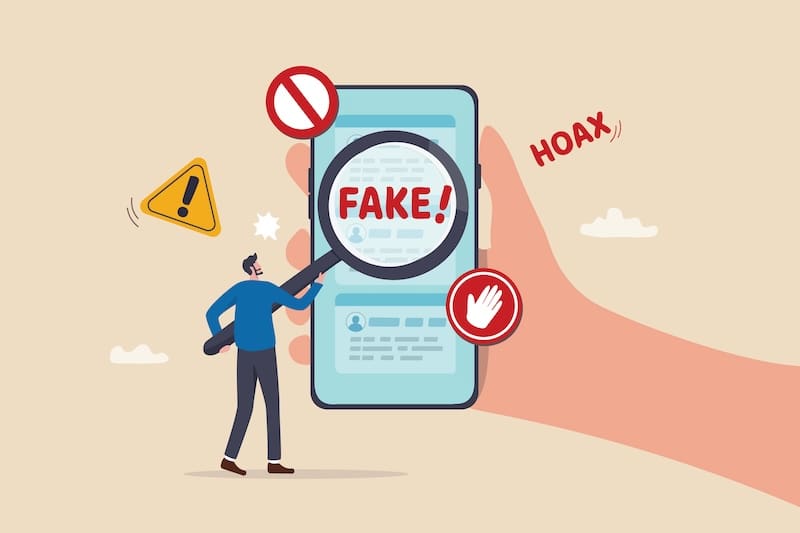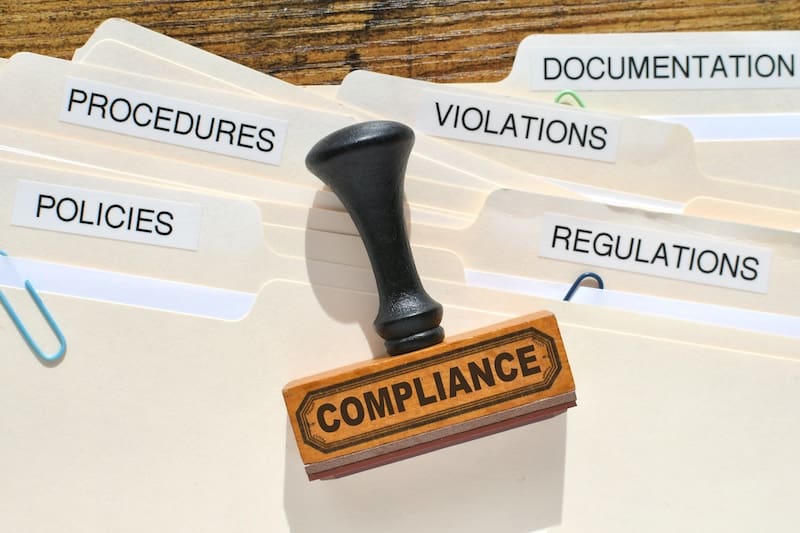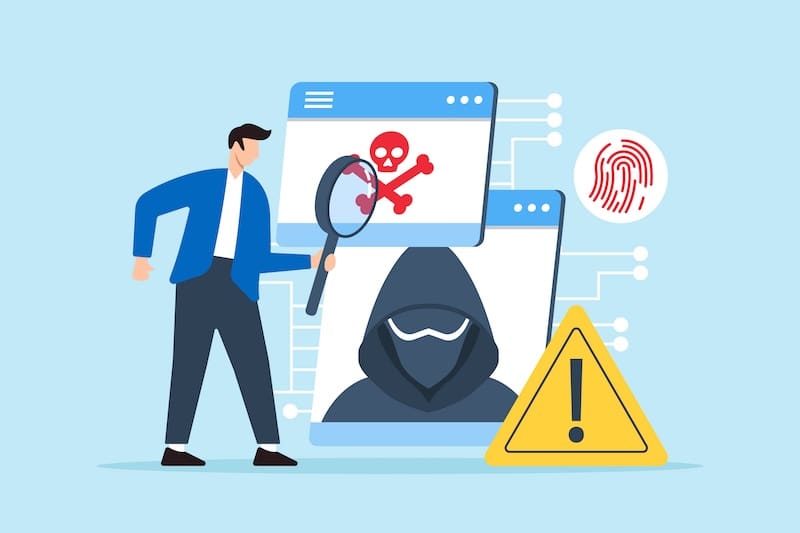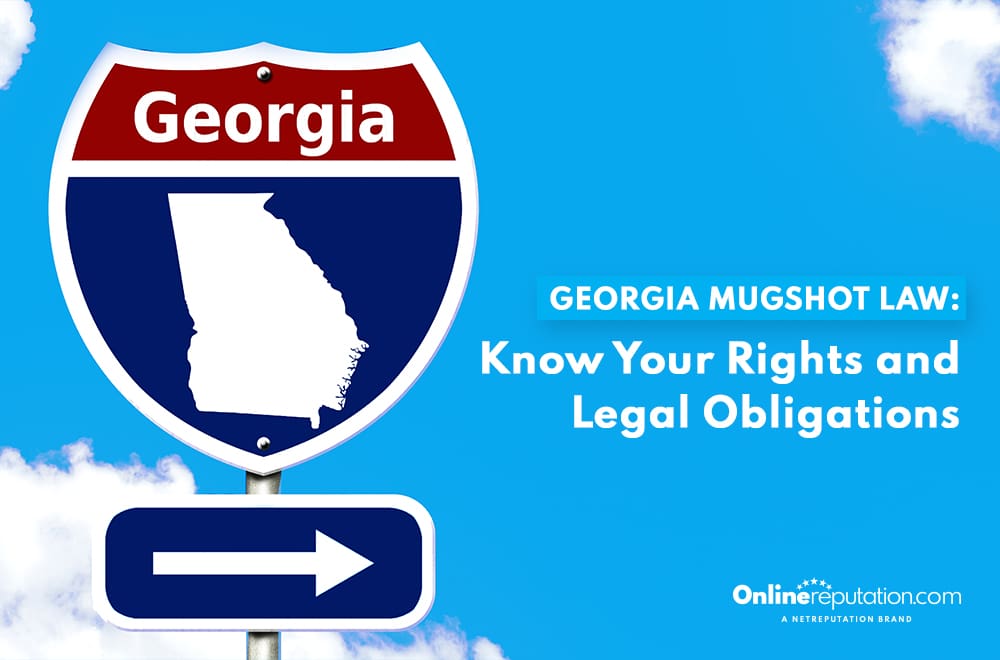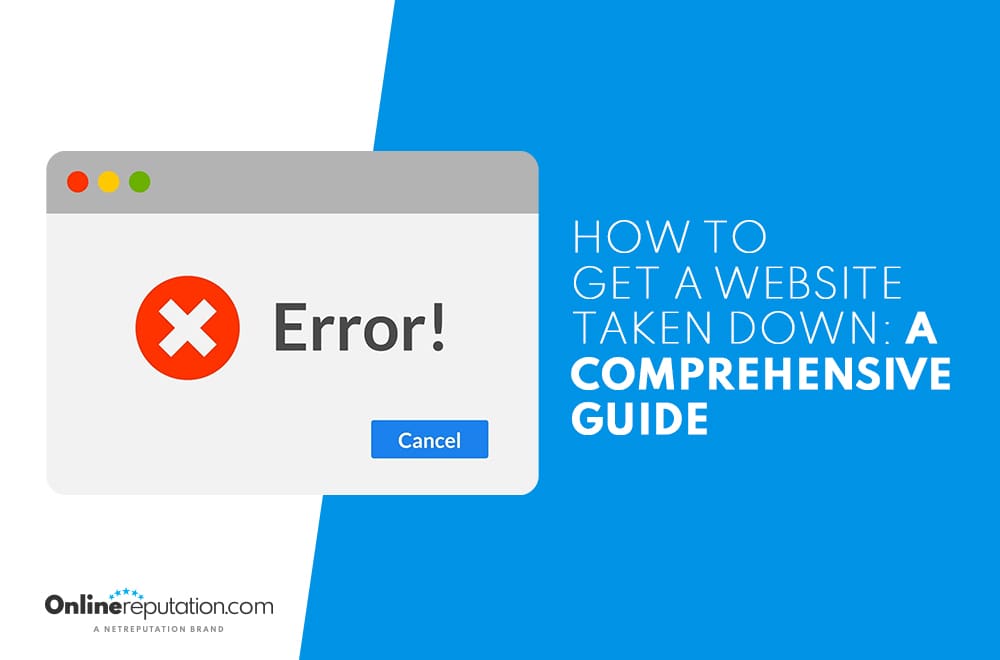
This comprehensive guide will show you how to get a website taken down, legal considerations, steps to follow, and common challenges.
In today’s digital age, the internet has become a powerful platform for communication, information sharing, and business transactions. And there may be instances when it becomes necessary to get a website taken down due to various reasons.
Before diving into the details, it’s crucial to understand why someone would want to get a website taken down in the first place. There could be several reasons, such as the website engaging in illegal activities, promoting hate speech or violence, or violating copyright laws. It is essential to address these concerns to protect individuals, businesses, and the integrity of the online community.
When dealing with the legalities of getting a website taken down, it’s important to consider if the website is involved in illegal activities, if there’s copyrighted content, and if it promotes hate speech or violence. Understanding these legal considerations will guide you to act appropriately and follow the correct procedures.
Steps and Challenges When You Want to Get a Website Taken Down
Certain steps can get a website taken down. These steps include documenting and gathering evidence, contacting the website owner, reporting the website to the relevant authorities, and contacting web hosting providers. Depending on the severity of the situation and the legal implications, legal avenues can address the issue effectively.
Acknowledging the common challenges that may arise while getting a website taken down is essential. These challenges include anonymity and privacy concerns, international jurisdiction issues, and resistance from web hosting providers. Overcoming these challenges requires careful navigation and understanding of the legal landscape.
It is equally important to protect your website from potential threats or violations. Implementing regular monitoring and reporting mechanisms, taking effective security measures, and backing up your website can help safeguard against unauthorized access, copyright infringement, and malicious activities.
By understanding the importance of getting a website taken down, considering legal implications, following the necessary steps, addressing common challenges, and protecting your own website, you can maintain a safe and ethical environment in the digital realm.
Understanding the Importance of Getting a Website Taken Down
Understanding the importance of getting a website taken down is crucial for maintaining online safety and protecting individuals from harmful content. Removing these websites promptly is vital in preventing the spread of inappropriate or dangerous materials.
When a website contains illegal or harmful content, taking swift action is necessary to ensure public safety. Neglecting these websites can have negative consequences such as misinformation, invasion of privacy, and potential harm to individuals.
It is important to note that taking down a website requires cooperation between law enforcement agencies, internet service providers, and web hosting platforms. This process may involve reporting the website to authorities, providing evidence of the violation, and working with relevant parties to remove the content.
Understanding the importance of taking down websites allows us to create a safer online environment.
Why Would You Want to Get a Website Taken Down?
It is important to consider various reasons to understand why you would want to get a website taken down. These reasons include legal violations, copyright infringement, and promoting hate speech or violence.
When a website engages in illegal activities such as drug sales or fraudulent schemes, it is crucial to take it down to ensure public safety and uphold the law. Protecting the rights of original content creators is vital, and it is necessary to request the removal of a domain name or website that unlawfully uses copyrighted content.
Certain actions can also prevent harm and maintain a safe online environment when a website promotes hate speech, incites violence, or spreads harmful ideologies.
The process of taking down a website involves several steps. These steps include documenting and gathering evidence of violations, contacting the website owner, reporting the website to relevant authorities, and contacting web hosting providers. In some cases, legal measures may be necessary.
Some challenges may arise during this process. These challenges may include anonymity and privacy issues, international jurisdiction complications, and web hosting providers’ resistance. Overcoming these challenges may require additional effort and legal expertise.
It is important to protect your website as well. Consider regularly monitoring and reporting potential violations, implementing effective security measures, and backing up your website to prevent unauthorized access or content theft.
Legal Considerations
Legal considerations are of utmost importance when taking down a website. It is essential to search results of the entire process within the boundaries of the law and with the utmost respect for individual rights.
First, it is crucial to establish whether the website’s content infringes upon copyright laws or contains any defamatory statements. The next step is to identify the jurisdiction and relevant laws to carry out the legal procedures correctly.
The third step is gathering evidence of the infringement or copyright violation itself, which helps strengthen the case. It is highly recommended to seek advice from legal professionals, who can ensure that all legal protocols are diligently adhered to throughout the process.
Is the Website Engaging in Illegal Activities?
The legality of a website is of utmost importance when determining whether it should remain active. It is crucial to assess whether the website is involved in illicit activities. Websites participating in unlawful actions raise significant concerns and need prompt attention.
If a website engages in illegal activities such as hacking, fraud, identity theft, or the distribution of illegal content, immediate action is necessary. Taking down the website becomes imperative to prevent further harm.
To effectively address this situation, gathering the necessary documentation and evidence to substantiate the claim of illegal activities is essential. This evidence will be vital in presenting a strong case when contacting the website owner or reporting the infringing website to the relevant authorities.
It is important to understand that taking down a website involved in illegal activities may involve legal considerations and adhere to jurisdiction-specific regulations. Therefore, exploring and utilizing the appropriate legal avenues is crucial to ensure a comprehensive resolution.
Does Copyright Protect the Content?
To determine if the content on a website is under copyright, consider the following:
- Originality: Does the author create the content, or is it copied from someone else?
- Tangible medium: Is the content fixed in a document, recording, or file for copyright protection?
- Authorship: Is the content created by an author who holds the rights? The employer may hold the copyright for certain works.
- Expression of ideas: Copyright protects the expression of ideas, not the ideas themselves. Generic facts and ideas are not protected.
- Duration: Copyright typically lasts for the author’s life plus 70 years. After this period, the content enters the public domain.
While it is important to determine if the content is protected by copyright, the presence of copyrighted material on web pages of a website does not automatically result in the entire site being taken down. Issues of copyright infringement should be addressed through legal avenues and proper procedures.
Is the Website Promoting Hate Speech or Violence?
Promoting hate speech or violence on a website is a great concern. It perpetuates harmful ideologies and can incite real-world harm and conflict. To tackle this issue, it is essential to determine whether a website is promoting hate speech or violence. This necessitates a comprehensive examination of the website’s content. Look for explicit messages that incite violence or promote discrimination based on race, religion, gender, or other protected characteristics. Analyze the context in which the content is presented to assess the potential harm it may cause.
If a website is indeed found to be promoting hate speech or violence, immediate action must be taken. It is crucial to document and gather evidence of the offending content. Report the website to the appropriate authorities, such as law enforcement agencies or internet regulatory bodies. It may also be effective to directly contact the website owner to express concerns and request the removal of offensive content.
Removing a website that promotes hate speech or violence can be challenging due to anonymity, privacy concerns, international jurisdiction issues, and resistance from web hosting providers.
To safeguard your website, it is advisable to regularly monitor and report any instances of hate speech or violence. Implement robust security measures to prevent your website from being compromised or used to propagate harmful content. Ensure you regularly back up your website to facilitate quick recovery in unforeseen circumstances.
Steps to Get a Website Taken Down
Get ready to take action! In this section, we’ll dive into the essential steps you need to take to get a website taken down. From documenting and gathering evidence to contacting web hosting providers and even exploring legal avenues, we’ll guide you through the process.
Let’s empower ourselves with the knowledge and strategies needed to effectively address websites that need to be removed from the digital realm.
1. Document and Gather Evidence
To successfully take down a website, it is crucial to document and gather evidence to substantiate your claims. You can follow these steps to ensure a systematic approach:
- Capture screenshots: Taking screenshots of the webpage or content you wish to remove is important. This visual evidence will greatly support your case.
- Note the specific URLs: Make a record of the URLs where you found objectionable content or illegal activities. This information assists authorities and web hosting providers in assessing the situation.
- Save offline copies: Download the website’s relevant web pages, documents, or associated files. This ensures you have preserved evidence even if the content is altered or deleted later.
- Record timestamps: Take note of the dates and times you encountered the objectionable content. This establishes a timeline and further strengthens your case.
- Gather witness statements: If others have also witnessed the offensive content or illegal activities, request them to provide written statements or record their observations. This adds credibility and multiple perspectives to your evidence.
Effective documenting and gathering of evidence plays a pivotal role in having a website or content removed from it. It provides a solid foundation for your claims and helps authorities, website owners, and web hosting providers understand the gravity of the situation. By diligently following these steps, you significantly increase the chances of successfully addressing harmful or illegal online content.
A True Story
Let me share a true story: In 2019, a group took the initiative to document and gather evidence against a website promoting hate speech and inciting violence towards a specific community. They meticulously captured screenshots, recorded URLs, saved offline copies, and collected witness statements. This compelling evidence enabled them to report the website to the relevant authorities, ultimately removing it from the internet. Their dedicated efforts exemplified the significance of thorough documentation and evidence gathering, ensuring a safer online environment.
2. Contact the Website Owner
When attempting to have a website taken down, it is crucial to reach out to the website owner. Here are a few steps you can follow:
- Identify the website owner: Utilize resources such as WHOIS to uncover their contact details.
- Compose a formal email: Clearly outline your concerns and provide reasons for requesting the website to be taken down.
- Include supporting evidence: Attach screenshots, links, or any copyright infringement notices you may have.
- Request action: Clearly state what you expect the website owner to do.
- Send the email: Once you proofread it, send it to the website owner.
Remember that contacting the website owner may not always yield positive results. They may choose to be unresponsive or uncooperative. In such instances, you may need to escalate the issue to other authorities or consider pursuing legal action.
3. Report the Website to the Relevant Authorities
To report a website to the relevant authorities, follow these steps:
- Document and gather evidence: Collect evidence that shows the website engages in illegal activities, promotes hate speech or violence, or infringes on copyright. This may include screenshots, URLs, or other relevant information.
- Contact the website owner: Reach out to the website owner directly, either through provided contact information or a designated form on the website. Politely explain your concerns and provide the evidence you have gathered.
- Report the website to the relevant authorities: If the website owner does not respond or take action, report the website to law enforcement agencies, cybercrime units, or relevant government departments. Provide them with all the evidence and explain the nature of your complaint.
- Reach out to web hosting providers: Contact the web hosting provider associated with the website and inform them about illegal activities, hate speech, or copyright infringement. Provide them with the evidence and request they take action or suspend the website if necessary.
- Utilize legal avenues: If all other steps fail, consult with a legal professional to explore legal options for getting the website taken down. They can guide you in filing a lawsuit or seeking court orders to force the website’s removal.
By following these steps and utilizing the appropriate channels, you can effectively report a website to the relevant authorities and take action against any illegal or harmful activities.
4. Reach Out to Web Hosting Providers
When taking steps to get a website taken down, one crucial step is to contact web hosting providers. Follow these steps:
- Identify the web hosting provider: Find out which company is hosting the website you want to take down. You can do this by conducting a WHOIS search or using online tools.
- Review the web hosting provider’s terms of service: Familiarize yourself with their policies on content removal.
- Compile evidence: Gather all the necessary evidence to support your claim that the website violates certain regulations or policies. This could include screenshots, URLs, or other relevant documentation.
- Contact the web hosting provider: Reach out directly to the hosting provider and provide them with the evidence of the website’s violations. Clearly state your request to have the website taken down and include any relevant legal provisions or policies to support your claim.
- Follow-up: If you don’t receive a response within a reasonable time, send a follow-up request. Ensure that your concerns are addressed and proper action is taken.
Remember, the effectiveness of contacting web hosting providers may vary depending on their policies and responses. It’s important to present a strong case and provide all necessary evidence to increase the chances of success.
In addition to contacting web hosting providers, you may consider using legal avenues or reporting the website to relevant authorities to further support your efforts in effectively getting a website down.
5. Utilize Legal Avenues
Utilizing legal avenues is essential for getting a website taken down. Here are the steps to effectively utilize these avenues:
- Research applicable laws: Familiarize yourself with laws in your jurisdiction regarding website takedowns. Understand the legal grounds and requirements for taking action against a website.
- Consult with an attorney: If you believe legal action is necessary, seek advice from a lawyer specializing in Internet law. They can provide guidance based on your specific situation.
- Send a cease and desist letter: A strongly worded letter from your attorney can prompt the website owner to remove the offending content voluntarily.
- File a DMCA takedown notice: If the website infringes on your copyrighted material, submit a Digital Millennium Copyright Act (DMCA) takedown notice to the website’s hosting provider. Include specific details of the copyrighted material and assert your rights.
- File a lawsuit: As a last resort, file a lawsuit against the website owner. Only take this step if other efforts have failed and the infringement or illegal activities are causing significant harm.
Remember, the effectiveness of utilizing legal avenues may vary depending on the jurisdiction and circumstances. Consult with legal professionals to ensure you follow the correct procedures and protect your rights.
When dealing with a website takedown, maintain a calm and professional demeanor. Following the appropriate legal channels will increase your chances of success and resolve the issue lawfully.
Common Challenges in Getting a Website Taken Down
Getting a website taken down may seem like a straightforward process, but it comes with its own set of challenges. In this section, we’ll explore the common obstacles that can arise when attempting to remove a website from the internet. From navigating anonymity and privacy concerns to tackling international jurisdiction complications and even facing resistance from web hosting providers, we’ll uncover the hurdles many encounter in their quest to take down a website.
Anonymity and Privacy Concerns
Anonymity and privacy concerns are of utmost importance when considering website takedowns. Safeguarding personal information is essential to address these concerns as sharing it without consent violates privacy rights.
The misuse of anonymity can lead to online harassment and stalking, making it necessary to take down websites that target individuals and invade their privacy to protect the victims.
Exposing confidential information on sites without authorization compromises privacy, emphasizing the need to remove websites to prevent further harm.
Websites involved in fraudulent activities pose a risk to privacy and anonymity, putting potential victims at risk of identity theft. Taking these websites down is crucial to protect them.
Websites that spread false information or engage in defamation severely impact the reputation of individuals or organizations. By taking such websites down, privacy can be restored, and their standing in the community can be protected.
International Jurisdiction Issues
International jurisdiction issues can pose significant challenges when trying to have a website removed from the internet. It is important to consider several factors to address these issues effectively.
The legal complexities surrounding international jurisdiction can be quite daunting. Websites can be hosted in one country but accessed worldwide, making it difficult to establish legal authority, especially if the host website falls under a different jurisdiction.
Varying laws and regulations exist in different countries regarding internet activities, content, and intellectual property. Understanding these laws and determining the applicable legal framework when dealing with international jurisdiction issues is crucial.
Mutual legal assistance treaties (MLATs) can facilitate cooperation between countries in legal matters. These treaties aid in evidence-gathering and enforcing decisions. The effectiveness of MLATs depends on the countries involved and their willingness to cooperate.
Practical limitations such as language barriers, cultural differences, and time zone disparities can complicate communication and coordination between authorities and legal professionals in different countries.
To navigate international jurisdiction issues effectively, seeking expert legal advice is vital. In some cases, it may also be necessary to collaborate with international law enforcement agencies. When taking down the website, cooperation and coordination between relevant authorities are crucial for addressing these challenges and ensuring compliance with the relevant laws and regulations.
Resistance from Web Hosting Providers
Resistance from web hosting providers can pose a significant challenge when attempting to remove a website. These providers play a vital role in hosting websites, making their cooperation essential. Nevertheless, certain providers may resist action due to financial factors, legal responsibilities, limited resources, or apprehensions regarding freedom of expression.
To surmount this resistance, it is imperative to present compelling evidence of illicit activities on the website. Enlisting the assistance of Internet law specialists can prove instrumental in effectively addressing this issue.
Protecting Your Website
Considering the importance of safeguarding your website, this section focuses on ways to protect your own digital space. From regular monitoring and reporting to implementing effective security measures and backing up your website, we will explore essential steps to ensure the safety and longevity of your online platform. Protecting your website from potential vulnerabilities and attacks is crucial in the ever-evolving threat landscape. Let’s dive into the key strategies that will help you fortify your online presence.
Regular Monitoring and Reporting
Regular monitoring and reporting are crucial for the security and integrity of your website. By regularly monitoring your website and consistently reporting any suspicious activity, you can effectively take measures to protect your site and its users.
- Identify potential threats: Monitor your website for any signs of unauthorized access, malware, or suspicious activity. This can include vigilance in observing unusual user behavior, staying alert for changes in website functionality, and promptly addressing any security breaches.
- Implement security measures: To address potential threats, it is important to proactively update your security software, utilize strong passwords and user authentication protocols, and regularly back up your data.
- Track website performance: To identify any issues and opportunities for improvement, regularly analyze important website metrics such as traffic, bounce rates, and conversion rates.
- Stay updated with security patches: Keep your software and plugins up to date with the latest security patches to effectively protect against any hacker exploitation attempts.
- Report suspicious activity: It is crucial to promptly report any suspicious activity or security breaches to your hosting provider or IT team for immediate investigation and resolution.
Regularly monitoring and reporting on your website or web host’s security will significantly help to protect against potential threats and ensure the safety of your website and users.
Implement Effective Security Measures
Implementing effective security measures is crucial for protecting your website and data. Here are the steps to take:
- Regularly update and patch your website’s software, plugins, and themes to address security vulnerabilities.
- Use strong and unique passwords for website admin accounts, FTP accounts, and databases. Consider a password manager.
- Add two-factor authentication to enhance website login security.
- Implement an SSL certificate to secure website communication. This encrypts data and prevents interception.
- Install a web application firewall (WAF) to block malicious traffic and defend against attacks like SQL injection and cross-site scripting.
- Back up website files and databases regularly to an off-site location. This allows restoration in case of security breaches or data loss.
- Monitor website logs and set up intrusion detection systems to identify suspicious activity or unauthorized access attempts.
- Stay updated with the latest security best practices and educate yourself and your team about common threats and social engineering techniques.
Back-Up Your Website
Back-up your website to ensure the safety and integrity of your online presence. Follow these steps:
- Create regular backups of your website files and databases. You can do this manually or by using backup plugins or software.
- Store your backups in a secure location, preferably offsite or in the cloud. This protects your data from hardware failures or disasters.
- Periodically verify the integrity of your backups to ensure they are complete and error-free. Test the restoration process to ensure a successful recovery.
- Use version control systems like Git to track changes in your website’s source code. This allows easy reversion to previous versions if needed.
- Encrypt your backups to protect sensitive data from unauthorized access. Use strong passwords or encryption methods to secure your backup files.
Get Professional Help With Your Online Reputation
If fake websites, negative search results or data brokers are causing issues with your online reputation, it’s time to take action. You don’t have to simply accept that an illegal, defamatory or fake website is going to ruin your online presence. There are several steps you can take to repair, manage and grow your online reputation.
Get in touch with us right away to discuss your next steps. Call us at 844-230-3803 today.
You might also like
Georgia Mugshot Law: Know Your Rights and Legal Obligations
This comprehensive guide will show you how to get a website taken down, legal considerations, steps to follow, and common …


